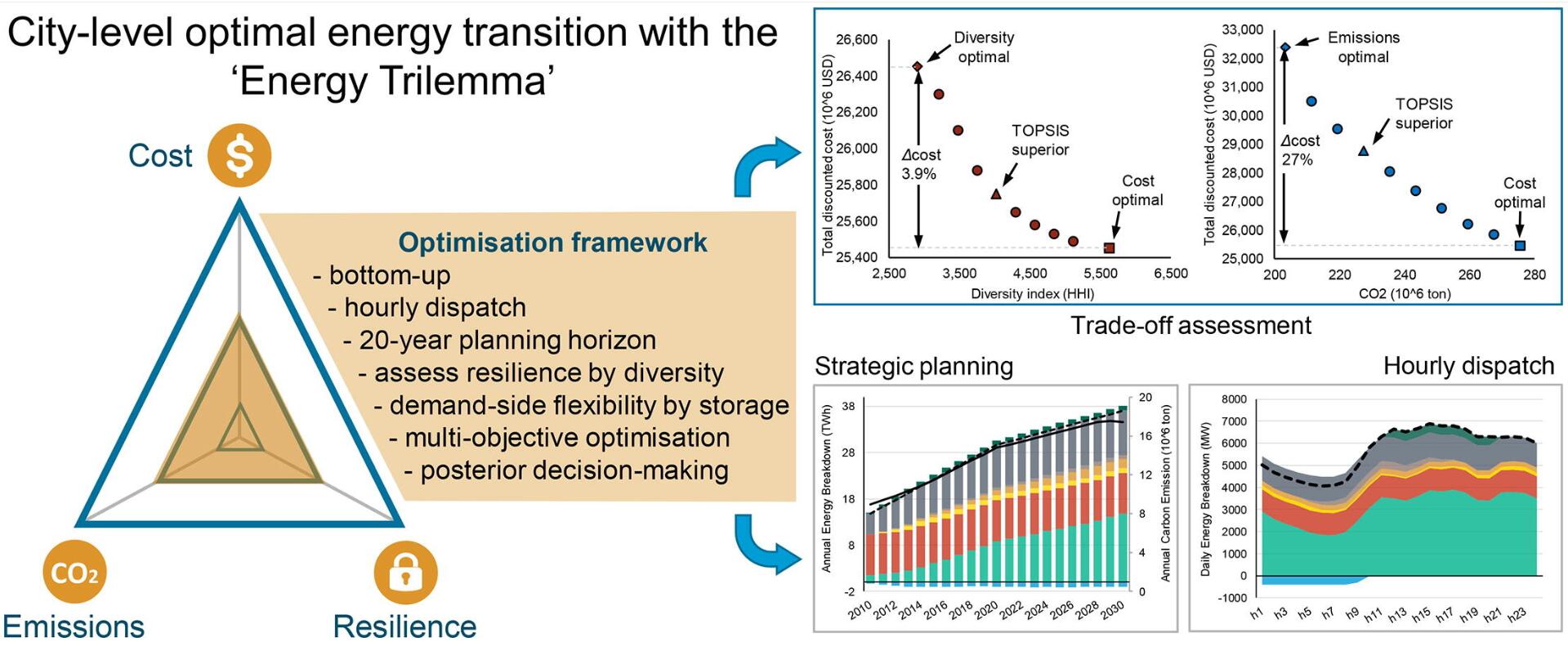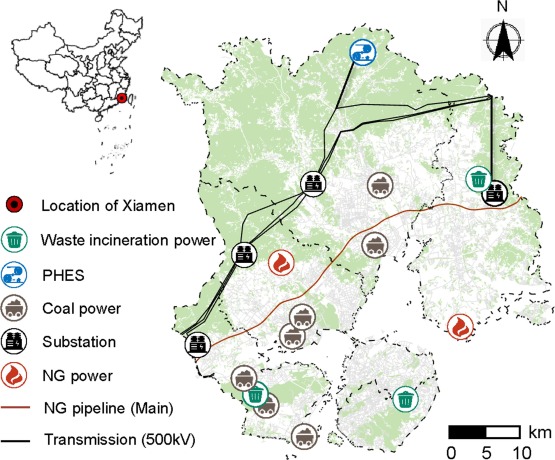More than 50% of the world's population lives in cities, and the end-use energy and emissions of cities account for more than 60% of global total amount. Therefore, the low-carbon transformation of urban energy is of great significance to the realization of global sustainable development. Meanwhile, facing of increasingly serious climate change and extreme weather events, it is essential to improve the resilience of the energy system. This research focuses on the resilience in urban energy planning and builds a bottom-up energy system multi-objective planning model that realize the co-optimization of long-term investment decisions (20 years) and short-term dispatch decisions (hourly).
The trade-off between the three objective functions, i.e., the cost, the emissions and the resilience, are comprehensively evaluated, which is also known as balancing the “Energy Trilemma”. In the established model, the “energy diversity” is used to denote the resilience; an “initialization” heuristic strategy is introduced to accelerates the solving of nonlinear optimization models; the trade-offs between different goals is displayed by Pareto frontier; and the posterior decision method is used to select the best-of-best trade-off point on the Pareto frontier.
The model is a preliminary exploration of urban energy resilience planning, which can evaluate the optimal transition path of urban energy under different optimization goals and provides a what-if scenario assessment and decision-support tool for the sustainable transition of urban energy systems. Taking the energy system of a typical coastal city-Xiamen as an example, the relevant findings could provide an empirical reference for the energy transition of coastal cities. The research output has been published “Balancing the Energy Trilemma in energy system planning of coastal cities” in top energy journal Applied Energy (IF 9.6). The research was jointly completed by the Institute of Urban Environment, State Grid Xiamen Power Supply Company, Lawrence Berkeley National Laboratory and Tongji University. Dr.JING Rui (Research Assistant) is the first author, and Prof. LIN Jianyi is the co-corresponding author. The research was funded by the National Natural Science Foundation of China (71573242).

Graphical abstract

Map of Xiamen and its existing energy infrastructure in Fujian Province, China